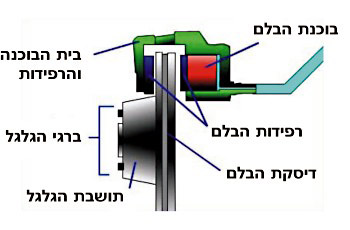Question:1
What is the implication of driving a vehicle with a broken headlamp lens?
Category : Know Your Vehicle
Question:2
Which of the vehicle’s systems might cause an uneven wear of the front tires?
Category : Know Your Vehicle
Question:3
What should a driver do when he detects a safety failure in the steering wheel or brakes while driving?
Category : Know Your Vehicle
Question:4
What might be the consequence of excessive brake use?
Category : Know Your Vehicle
Question:5
How will you recognize brakes overheating?
Category : Know Your Vehicle
Question:6
When the oil pressure check lamp lights-up while driving, you should:
Category : Know Your Vehicle
Question:7
What are the vehicle’s control systems?
Category : Know Your Vehicle
Question:8
During the vehicle’s annual test, the licensing facility shall register:
Category : Know Your Vehicle
Question:9
What should you pay attention to whilst parking in a closed parking lgarage?
Category : Know Your Vehicle
Question:10
How should a driver verify that the hydraulic brake system is properly functioning?
Category : Know Your Vehicle
Question:11
The correct vehicle tire size is:
Category : Know Your Vehicle
Question:12
What is the significance of the head rests on the vehicle’s seats during an accident from behind?
Category : Know Your Vehicle
Question:13
In order to shift gears from parking (P) to Drive (R or D) in an automatic transmission vehicle, you should:
Category : Know Your Vehicle
Question:14
What should you check when purchasing a new tire for your vehicle?
Category : Know Your Vehicle
Question:15
Regular vehicle maintenance, in accordance with the manufacturer’s manual, will:
Category : Know Your Vehicle
Question:16
What is the required air pressure of the vehicle’s spare tire?
Category : Know Your Vehicle
Question:17
“Keeping a safe distance from the vehicle in front affects fuel consumption and vehicle wear and tear”. Correct or incorrect?
Category : Know Your Vehicle
Question:18
How does the braking system of a vehicle work?

Category : Know Your Vehicle
Question:19
What is “preventive maintenance” of a vehicle?
Category : Know Your Vehicle
Question:20
For what reason might the indicator warning light on the dashboard flash too quickly?
Category : Know Your Vehicle
Question:21
What are you required to do after changing a wheel?
Category : Know Your Vehicle
Question:22
What safety measures should be taken before lifting the vehicle with a jack stand?
Category : Know Your Vehicle
Question:23
What is “wheel locking”?
Category : Know Your Vehicle
Question:24
What is the function of the vehicle’s Electronic Stability Program (ESP) System?
Category : Know Your Vehicle
Question:25
What might happen to a vehicle when its wheels get locked?
Category : Know Your Vehicle
Question:26
What are you required to check when one of the vehicle’s lamps is not working?
Category : Know Your Vehicle
Question:27
How should you use the gearbox while driving on a continuous descent?
Category : Know Your Vehicle
Question:28
What is the risk of using the GPS navigation system while driving?
Category : Know Your Vehicle
Question:29
What would you do to achieve safe driving down a continuous steep slope?
Category : Know Your Vehicle
Question:30
The auxiliary (parking/hand) brake may also be used:
Category : Know Your Vehicle

